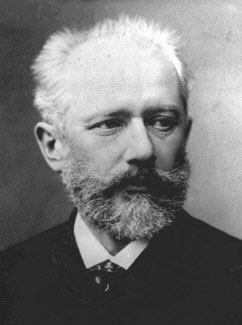Who Created it?Piotr Ilyich Tchaikovsky The romantic in Tchaikovsky found its greatest outlet in his three great ballet scores, all of which are eternally popular. The Nutcracker is a perennial Christmas favorite, and the well-known theme of the tragic Swan-princess from Swan Lake seems to embody the intense, heartfelt, romanticized suffering which Tchaikovsky's music gives voice to so often. |
 |
When and where was it created?
Tchaikovsky composed this ballet in Russian in 1892 just before he left for his successful tour in the United States.
Why and for whom was it created?
After viewing Tchaikovsky's opera The Queen of Spades in 1891 and being greatly impressed by this work, the director of the Imperial Opera, A. Vsevolozhsky, promptly commissioned Tchaikovsky to write both a one-act opera and a ballet for the following season. The ballet was to be based on E. T. A. Hoffman's story The Nutcracker and the Mouse King, a selection which Tchaikovsky disliked. He did not like being given a topic for his compositions. Nevertheless, he began work in early 1892 before departing on his tour of the U.S.A., and he completed the work later that summer. He disparaged his Nutcracker as "infinitely poorer than his Sleeping Beauty, a verdict with which subsequent ballet-goers have most emphatically and consistently disagreed.
What is the subject?
The subject of the ballet is drawn from Hoffman's story The Nutcracker and the Mouse King, although what is commonly seen today has changed much from the original story of a little girl named Marie in a loveless household fighting bloody battles against a mouse king with seven heads. This is because Tchaikovsky and chief choreographer of the Imperial Theatres, Marius Petipa, used Alexander Dumas' version of the story to create their ballet. Today, it is most common to see and hear a fairy tale about a young girl named Clara and her favorite Christmas. Her Godfather, Drosselmeier gives her a beautiful nutcracker doll at the annual family party. Clara wants to stay up all night with this doll, but once she does fall asleep she has a dream which fills the remainder of the ballet. In the dream a series of magical events takes place. These include the Nutcracker defeating the Mouse King and then changing into a prince who carries Clara off into a fantasy land. In this land Clara meets various characters including the Flowers, the Sugar Plum Fairy, the Arabian Dancers, the Chinese Dancers, and the Russian Dancers. In the Russian Dance there is a group of Cossacks who dance the Trepak, and Russian folk dance, in tall black boots.
What is being expressed?
Excitement, athletic prowess, and celebration all seem to describe this selection from the ballet. Tchaikovsky was inspired by the Russian Trepak, a dance with Cossak origins. It is an animated dance in 2/4 time, and it is typically performed by men and features prisiadka (kicking the legs from a squatting position). Tchaikovsky's Trepak is one of the most recognized examples of art music from the ballet.
What techniques did its creator use to help us understand what is being expressed?
Tchaikovsky uses a repeated pattern that slowly gets faster throughout the dance. Using various instruments he paints a picture of increading tension.When listening to the music you can tell when the dancers do their high jumps and spins, for the music suddenly gets louder [accents] where the dancers jump. As the music gets louder and faster, it seems to pose a tremendous challenge for the dancers and musicians. The audience must wonder how long, how high, and how fast can these musicians and dancers go.
What kind of structure or form does it have?
The first part of the dance is repeated 4 times. A new pattern comes in and it is repeated 2 times. Then a bridge of music comes in with the first part of dance repeating 2 more times with accents of bells. then there is a coda that gradually gets faster and louder.
What does it sound or look like?
An entire symphony is used in this piece. Even though it is a combination of instruments, you can recognize the four instruments families: strings, brass, woodwinds, and percussion. The increase in tempo and dynamics makes you wonder how fast and how loud can it go. You wonder if it will all spin out of control?